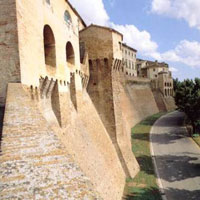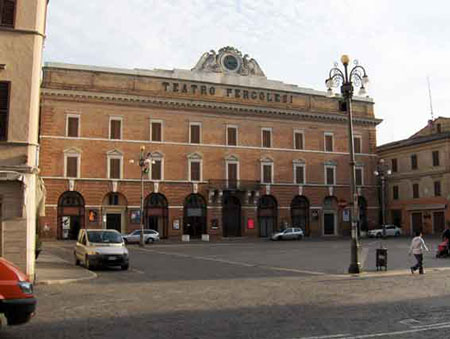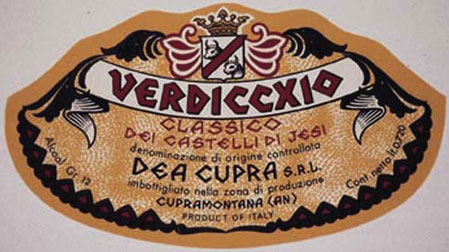 It does not matter if you know it for the Verdicchio or for Frederick II of Swabia.
It does not matter if you know it for the Verdicchio or for Frederick II of Swabia.
Jesi deserves always a visit.
So andao giù nel vallao e ho comprao un gelao al cioccolao.
(I went to the village and bought a chocolate ice cream)
I swear I was not drunk when I wrote this post. I only cited what they say when you want to make fun of a guy from Jesi.
A bit like the
hoha hola halda hon la hannuccia horta
(A popular Florentine twister-tongue that literally translated means: “A hot coke with a short straw”).
You might argue that its dialect does not really sound nicely, but Jesi is one of the largest towns in the Marche and is rich in history and art.
Jesi and the industry
Some while ago Jesi had been defined as the “Milan of the Marche” because of the industrial area that surrounds it.
Unfortunately today, although there are always many companies and industries, they are certainly in a much fewer numner compared to only a decade ago.
Even the famous Sadam has closed, thae one of the sugar (Does Eridania mean anything to you?).
Jesi owes its development above all to the Romans, who had sensed its strategic position.
Jesi’s past
As I said before, Jesi owes its development to the Romans. His birth, however, owes it to the Umbrians who founded “Aesis”.
The 12th century for Jesi was very important both because it became a Municipality and because here it was born Federico II of Swabia.
Jesi too witnessed the wars between the Guelphs (papacy) and the Ghibellines (emperor), but in 1447 it returned definitively to the Church.
Walking around the city of Jesi
There are many things to see in Jesi.
For example, the walls that enclose the original core of the city. A beautiful example of a defensive system by Baccio Pontelli… the one who also designed the Roverese fortress of Senigallia.

Piazza Federico II is placed where once there was the Roman Forum and where it is said that Costanza of Altavilla gave birth to the Swabian emperor under a tent.
Starting from Piazza Federico II you can take Via Pergolesi, where in a widening on the right (about halfway) a plaque indicates the birthplace of Pergolesi.
At the beginning of Via Pergolesi there is Palazzo della Signoria built by Francesco di Giorgio Martini… the one who also designed the Palazzo Ducale di Urbino. Inside there are the municipal library and the civic museum.

Instead on the other side is the Pergolesi Theater, in Piazza della Repubblica. Today it is one of the most important theaters for operas.
Further on, on the parallel of Corso Matteotti, there is the Sanctuary of Santa Maria delle Grazie, initially built as a votive chapel after the period of weights in the middle of the fifteenth century.
What to see around Jesi
- Moie
About 10 km from Jesi there is the second Cistercian foundation along the Esino, or in other words the Church of Santa Maria.
- Maiolati Spontini
From the Moie you climb up to Maiolati, to which the name of the musician Gaspare Spontini has been added, becoming now Maiolati Spontini.
In fact the Spontinian Museum preserves its personal library, while in the Church of San Giovanni there is its tomb with a medallion by Antonio Canova.
- Cupramontana
It owes its name to the temple of the goddess Cupra, symbol of abundance. Of Piceno origin, it is famous for a particular museum: the international museum of wine labels.

- Stafford
A stop at the Wine Museum which houses a wine press in oak and stone dated back to 1695.
What do you think now? Are you going for a tour to Jesi and surroundings?
